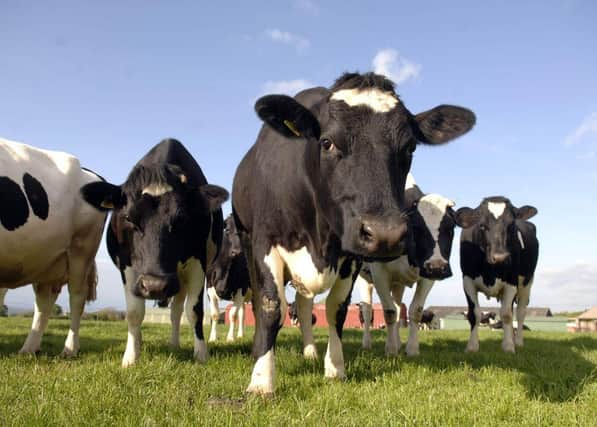Farming: App pushes back boundaries with ‘virtual’ fencing


Nofence, the Norwegian company established in 2011 claims that the use of their app will allow farmers to set virtual field boundaries which can be moved within a matter of a few seconds.
“Livestock wearing Nofence collars can then be turned out into the area to graze with no physical fencing,” said Synne Foss Budal, general manager for Nofence in the UK following two years of trials in this country.
Advertisement
Hide AdAdvertisement
Hide AdWeighing 0.7kg for the sheep collar and 1.4kg for the cattle collar, the devices have integrated solar panels to maintain battery life throughout the grazing season.
Budal said that when an animal crossed the boundary which could be set remotely by the farmer, a three-stage audio warning would sound – and if the animal did not turn around by the third repetition, it would receive a small electric pulse, equivalent to less than one fifth of power delivered by standard electric fencing.
When a pulse is issued by the collar, a pop-up notification is immediately sent to the keeper via the Nofence app, alerting them to the location of the animal. She said that if the animal continued to move in the wrong direction, a maximum of only three pulses would be delivered before it was classed as ‘escaped’.
“Again, the farmer is notified, and the location of the animal is tracked,” said Budal who added that when the animal crossed back through the boundary to return to the herd, it did not receive a pulse and she claimed that animals typically returned on their own if they did stray outside the boundaries.
“Instead of cows using their sense of sight to see a physical fence to keep them in, they use their sense of hearing. And it has proven to be very effective,” explained Budal.
“Through observations of herd behaviour on more than 30,000 head of livestock logging more than 75 million grazing hours, a typical farm will have just one pulse per every 30 audio cues. The app allows farmers to track the number and location of audio signals and pulses given to individual animals to allow them to adjust pasture design if required.”
Precision grazing specialist, James Daniel, said that virtual fencing was a game-changing tool which would help speed the wide-scale adoption of managed grazing techniques.
Working with five different UK livestock farmers on a pilot project to integrate virtual fencing into a variety of managed grazing systems, Daniel said: “Managed grazing increases the productivity of pastures and livestock by working with the plant’s natural growth pattern.”
Advertisement
Hide AdAdvertisement
Hide AdHe said that leaving animals in a paddock for too long could lead to overgrazing, lower productivity, pasture degeneration and reduced forage production which ultimately led to more expense for the farmer, adding that virtual fencing was ideal for short grazing periods and frequent moves.
Comments
Want to join the conversation? Please or to comment on this article.